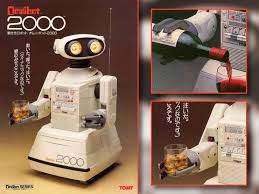My constant search for the next ‘cool’ tech toy or app is inspired by my obsession for automation. Trying to teach my 4 and 6 year old kids to think of creative solutions for their repetitive problems (no, there’s not yet a robot that cleans their rooms) surfaced the following 3 top toys and top apps in 2017.
Top 3 Robot Coding Toys in 2017
Top Pick: Dash and Dot - Making Programming Robots Super Simple and Flexible at the same Time (Wonder Workshop)
Dash and Dot are flat out the best robots to teach your kids to code and automate pesky repetitive tasks. And here is why: they offer the optimal combination of hardware and software that eliminates most or all frustration for 4 or 7 year olds who want to explore robots. At the same time, Dash and Dot offer excellent software for for older kids and also for adults to create sophisticated and most importantly, easy to debug, programs. I have been using Dash and Dot at home and for my weekly school workshops for nearly 2 years and only came across one minor shortcoming: the distance sensors do not ‘cover’ dash from head to toe, but only in its middle area, leading to occasional run ins with furniture. Wonder Workshop offers a ton of example curricula for robotics clubs or school lessons, but I prefer to figure these things out the hard way, by trying out my crazy ideas in front of the kids.
[embed width="500"]https://youtu.be/USCLN5dosGk[/embed]
Lego Boost - Lego Robotics Your Kids Can Do with or without You
While I like Lego Evo, this set and its expansions are simply too time consuming for me to help my 6 year old build any exciting robots or machines. While the standard Boost robots take a while to assemble, the iPad app beautifully guided my 6 year old through the build and programming process. Additionally, Lego Boost lets him build simpler machines just out of the electronic parts and program them into something interesting.
[embed width="500"]https://youtu.be/tXXDx9qV-MM[/embed]
Anki Cozmo - Makes Machine Learning and Robot - Human Interactions Approachable
Initially we were disappointed by Cozmo, as it launched with very limited capabilities, did not have a Scratch-like visual coding app, and lacked obstacle avoidance/recognition. The latter is the only remaining crucial complaint, which means that you cannot easily build a maze-solver or any simple obstacle avoidance algorithms. Instead, you would need to use the OpenCV open source computer vision library, which is not a trivial affair for most of us, and certainly not for kids. However, the Kindergardeners and first graders absolutely loved how Dash recognizes faces, stacks Kubes and plays games with them. This robot is ambitious and not perfect, but it’s almost a must for anyone who wants to play with consumer grade machine learning (I wouldn’t yet call it AI).
[embed width="500"]https://youtu.be/aVpz8yBBKO0[/embed]
Top 3 Coding Apps that Feel like Gaming
Top Pick: Lightbot - Optimal for Getting Anyone into Coding without a Detectable Learning Curve
I used Lightbot to teach my son’s Kindergarten class the fundamentals of coding. Lightbot is the only kids coding app I know that teaches them loops and functions simply by letting them solve specific challenges that would not be solvable without these concepts. Lightbot is as much fun for adults as it is for kids, and most of us can do with a little refresher of the fundamentals of coding. The idea behind the game is simple: program your Lightbot so that he/she can solve the maze by turning all the required lights on. I still catch myself playing Lightbot on my phone, when I wait in line somewhere or when I’m done working on a long flight.
[embed width="500"] https://youtu.be/R_iIEX4845c [/embed]
Top Pick: Human Resource Machine by The Tomorrow Corporation
Human Resource Machine is a little more ambitious than Lightbot and targeted toward slightly older kids. My 6 year old is having fun finding solutions for the poor worker minion to carry the right numbers and letters from the inbox to the outbox. However, as he moves up in the Tomorrow Corporation, the levels are becoming a little too tricky for him to solve by himself and at some point they were also tricky for me, in that it takes quite some focus to design all the loops, conditional loops, and nested conditional loops to solve the puzzles. However, the game does not get frustrating and we keep coming back to it, as the UI and concept are just too addicting.
[embed width="500"] https://youtu.be/FCame8hJr24 [/embed]
Everything Machine - by TinyBob
The Everything Machine is my number 3 coding game for 2017 and it is absolutely unique. The game gives you access to all the sensors, microphones, and speakers of your smartphone or tablet and let’s you build crazy machines. For example, when the iPad camera recognizes a face, or a specific color, or a lot of light, or all of the above, the iPad speaker starts playing a specific song. Everything Machine is basically gamified home automation where you use all the capabilities of your device and visually create conditions of how to use them for a specifc task. Make your iPhone vibrate when you tilt it up or record sound when someone comes near it, or do something much more complicated. I like this game because it provides kids and adults with lots of ideas for how to automate their daily lives.
[embed width="500"] https://player.vimeo.com/video/135391706" [/embed]




